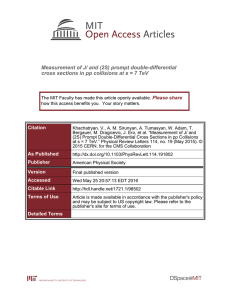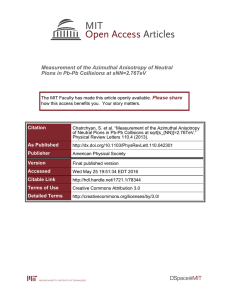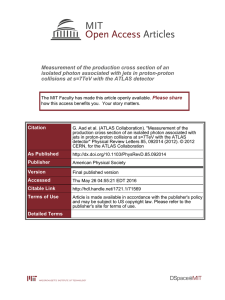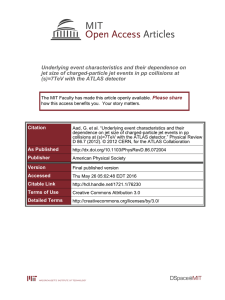e : p p Collisions at
advertisement
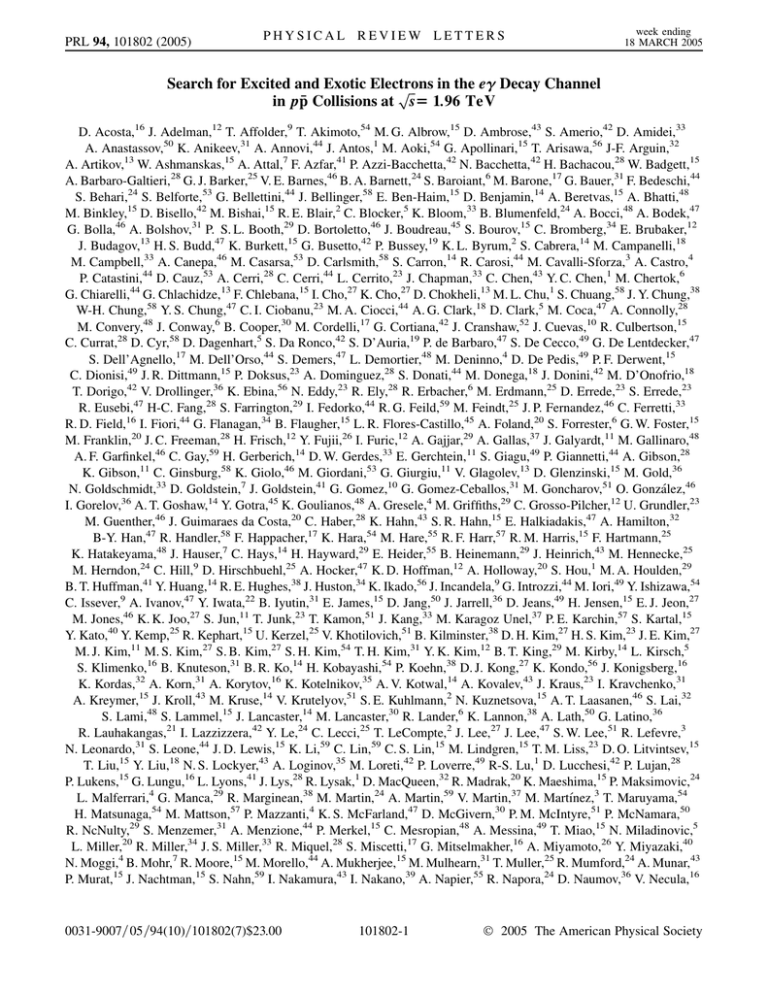
PRL 94, 101802 (2005) PHYSICAL REVIEW LETTERS week ending 18 MARCH 2005 Search for Excited and Exotic Electrons p in the e Decay Channel in pp Collisions at s 1:96 TeV D. Acosta,16 J. Adelman,12 T. Affolder,9 T. Akimoto,54 M. G. Albrow,15 D. Ambrose,43 S. Amerio,42 D. Amidei,33 A. Anastassov,50 K. Anikeev,31 A. Annovi,44 J. Antos,1 M. Aoki,54 G. Apollinari,15 T. Arisawa,56 J-F. Arguin,32 A. Artikov,13 W. Ashmanskas,15 A. Attal,7 F. Azfar,41 P. Azzi-Bacchetta,42 N. Bacchetta,42 H. Bachacou,28 W. Badgett,15 A. Barbaro-Galtieri,28 G. J. Barker,25 V. E. Barnes,46 B. A. Barnett,24 S. Baroiant,6 M. Barone,17 G. Bauer,31 F. Bedeschi,44 S. Behari,24 S. Belforte,53 G. Bellettini,44 J. Bellinger,58 E. Ben-Haim,15 D. Benjamin,14 A. Beretvas,15 A. Bhatti,48 M. Binkley,15 D. Bisello,42 M. Bishai,15 R. E. Blair,2 C. Blocker,5 K. Bloom,33 B. Blumenfeld,24 A. Bocci,48 A. Bodek,47 G. Bolla,46 A. Bolshov,31 P. S. L. Booth,29 D. Bortoletto,46 J. Boudreau,45 S. Bourov,15 C. Bromberg,34 E. Brubaker,12 J. Budagov,13 H. S. Budd,47 K. Burkett,15 G. Busetto,42 P. Bussey,19 K. L. Byrum,2 S. Cabrera,14 M. Campanelli,18 M. Campbell,33 A. Canepa,46 M. Casarsa,53 D. Carlsmith,58 S. Carron,14 R. Carosi,44 M. Cavalli-Sforza,3 A. Castro,4 P. Catastini,44 D. Cauz,53 A. Cerri,28 C. Cerri,44 L. Cerrito,23 J. Chapman,33 C. Chen,43 Y. C. Chen,1 M. Chertok,6 G. Chiarelli,44 G. Chlachidze,13 F. Chlebana,15 I. Cho,27 K. Cho,27 D. Chokheli,13 M. L. Chu,1 S. Chuang,58 J. Y. Chung,38 W-H. Chung,58 Y. S. Chung,47 C. I. Ciobanu,23 M. A. Ciocci,44 A. G. Clark,18 D. Clark,5 M. Coca,47 A. Connolly,28 M. Convery,48 J. Conway,6 B. Cooper,30 M. Cordelli,17 G. Cortiana,42 J. Cranshaw,52 J. Cuevas,10 R. Culbertson,15 C. Currat,28 D. Cyr,58 D. Dagenhart,5 S. Da Ronco,42 S. D’Auria,19 P. de Barbaro,47 S. De Cecco,49 G. De Lentdecker,47 S. Dell’Agnello,17 M. Dell’Orso,44 S. Demers,47 L. Demortier,48 M. Deninno,4 D. De Pedis,49 P. F. Derwent,15 C. Dionisi,49 J. R. Dittmann,15 P. Doksus,23 A. Dominguez,28 S. Donati,44 M. Donega,18 J. Donini,42 M. D’Onofrio,18 T. Dorigo,42 V. Drollinger,36 K. Ebina,56 N. Eddy,23 R. Ely,28 R. Erbacher,6 M. Erdmann,25 D. Errede,23 S. Errede,23 R. Eusebi,47 H-C. Fang,28 S. Farrington,29 I. Fedorko,44 R. G. Feild,59 M. Feindt,25 J. P. Fernandez,46 C. Ferretti,33 R. D. Field,16 I. Fiori,44 G. Flanagan,34 B. Flaugher,15 L. R. Flores-Castillo,45 A. Foland,20 S. Forrester,6 G. W. Foster,15 M. Franklin,20 J. C. Freeman,28 H. Frisch,12 Y. Fujii,26 I. Furic,12 A. Gajjar,29 A. Gallas,37 J. Galyardt,11 M. Gallinaro,48 A. F. Garfinkel,46 C. Gay,59 H. Gerberich,14 D. W. Gerdes,33 E. Gerchtein,11 S. Giagu,49 P. Giannetti,44 A. Gibson,28 K. Gibson,11 C. Ginsburg,58 K. Giolo,46 M. Giordani,53 G. Giurgiu,11 V. Glagolev,13 D. Glenzinski,15 M. Gold,36 N. Goldschmidt,33 D. Goldstein,7 J. Goldstein,41 G. Gomez,10 G. Gomez-Ceballos,31 M. Goncharov,51 O. González,46 I. Gorelov,36 A. T. Goshaw,14 Y. Gotra,45 K. Goulianos,48 A. Gresele,4 M. Griffiths,29 C. Grosso-Pilcher,12 U. Grundler,23 M. Guenther,46 J. Guimaraes da Costa,20 C. Haber,28 K. Hahn,43 S. R. Hahn,15 E. Halkiadakis,47 A. Hamilton,32 B-Y. Han,47 R. Handler,58 F. Happacher,17 K. Hara,54 M. Hare,55 R. F. Harr,57 R. M. Harris,15 F. Hartmann,25 K. Hatakeyama,48 J. Hauser,7 C. Hays,14 H. Hayward,29 E. Heider,55 B. Heinemann,29 J. Heinrich,43 M. Hennecke,25 M. Herndon,24 C. Hill,9 D. Hirschbuehl,25 A. Hocker,47 K. D. Hoffman,12 A. Holloway,20 S. Hou,1 M. A. Houlden,29 B. T. Huffman,41 Y. Huang,14 R. E. Hughes,38 J. Huston,34 K. Ikado,56 J. Incandela,9 G. Introzzi,44 M. Iori,49 Y. Ishizawa,54 C. Issever,9 A. Ivanov,47 Y. Iwata,22 B. Iyutin,31 E. James,15 D. Jang,50 J. Jarrell,36 D. Jeans,49 H. Jensen,15 E. J. Jeon,27 M. Jones,46 K. K. Joo,27 S. Jun,11 T. Junk,23 T. Kamon,51 J. Kang,33 M. Karagoz Unel,37 P. E. Karchin,57 S. Kartal,15 Y. Kato,40 Y. Kemp,25 R. Kephart,15 U. Kerzel,25 V. Khotilovich,51 B. Kilminster,38 D. H. Kim,27 H. S. Kim,23 J. E. Kim,27 M. J. Kim,11 M. S. Kim,27 S. B. Kim,27 S. H. Kim,54 T. H. Kim,31 Y. K. Kim,12 B. T. King,29 M. Kirby,14 L. Kirsch,5 S. Klimenko,16 B. Knuteson,31 B. R. Ko,14 H. Kobayashi,54 P. Koehn,38 D. J. Kong,27 K. Kondo,56 J. Konigsberg,16 K. Kordas,32 A. Korn,31 A. Korytov,16 K. Kotelnikov,35 A. V. Kotwal,14 A. Kovalev,43 J. Kraus,23 I. Kravchenko,31 A. Kreymer,15 J. Kroll,43 M. Kruse,14 V. Krutelyov,51 S. E. Kuhlmann,2 N. Kuznetsova,15 A. T. Laasanen,46 S. Lai,32 S. Lami,48 S. Lammel,15 J. Lancaster,14 M. Lancaster,30 R. Lander,6 K. Lannon,38 A. Lath,50 G. Latino,36 R. Lauhakangas,21 I. Lazzizzera, 42 Y. Le,24 C. Lecci,25 T. LeCompte,2 J. Lee,27 J. Lee,47 S. W. Lee,51 R. Lefevre,3 N. Leonardo,31 S. Leone,44 J. D. Lewis,15 K. Li,59 C. Lin,59 C. S. Lin,15 M. Lindgren,15 T. M. Liss,23 D. O. Litvintsev,15 T. Liu,15 Y. Liu,18 N. S. Lockyer,43 A. Loginov,35 M. Loreti,42 P. Loverre,49 R-S. Lu,1 D. Lucchesi,42 P. Lujan,28 P. Lukens,15 G. Lungu,16 L. Lyons,41 J. Lys,28 R. Lysak,1 D. MacQueen,32 R. Madrak,20 K. Maeshima,15 P. Maksimovic,24 L. Malferrari,4 G. Manca,29 R. Marginean,38 M. Martin,24 A. Martin,59 V. Martin,37 M. Martı́nez,3 T. Maruyama,54 H. Matsunaga,54 M. Mattson,57 P. Mazzanti,4 K. S. McFarland,47 D. McGivern,30 P. M. McIntyre,51 P. McNamara,50 R. NcNulty,29 S. Menzemer,31 A. Menzione,44 P. Merkel,15 C. Mesropian,48 A. Messina,49 T. Miao,15 N. Miladinovic,5 L. Miller,20 R. Miller,34 J. S. Miller,33 R. Miquel,28 S. Miscetti,17 G. Mitselmakher,16 A. Miyamoto,26 Y. Miyazaki,40 N. Moggi,4 B. Mohr,7 R. Moore,15 M. Morello,44 A. Mukherjee,15 M. Mulhearn,31 T. Muller,25 R. Mumford,24 A. Munar,43 P. Murat,15 J. Nachtman,15 S. Nahn,59 I. Nakamura,43 I. Nakano,39 A. Napier,55 R. Napora,24 D. Naumov,36 V. Necula,16 0031-9007=05=94(10)=101802(7)$23.00 101802-1 2005 The American Physical Society PRL 94, 101802 (2005) PHYSICAL REVIEW LETTERS week ending 18 MARCH 2005 F. Niell,33 J. Nielsen,28 C. Nelson,15 T. Nelson,15 C. Neu,43 M. S. Neubauer,8 C. Newman-Holmes,15 A-S. Nicollerat,18 T. Nigmanov,45 L. Nodulman,2 O. Norniella,3 K. Oesterberg,21 T. Ogawa,56 S. H. Oh,14 Y. D. Oh,27 T. Ohsugi,22 T. Okusawa,40 R. Oldeman,49 R. Orava,21 W. Orejudos,28 C. Pagliarone,44 E. Palencia,10 F. Palmonari,44 R. Paoletti,44 V. Papadimitriou,15 S. Pashapour,32 J. Patrick,15 G. Pauletta,53 M. Paulini,11 T. Pauly,41 C. Paus,31 D. Pellett,6 A. Penzo,53 T. J. Phillips,14 G. Piacentino,44 J. Piedra,10 K. T. Pitts,23 C. Plager,7 A. Pompoš,46 L. Pondrom,58 G. Pope,45 O. Poukhov,13 F. Prakoshyn,13 T. Pratt,29 A. Pronko,16 J. Proudfoot,2 F. Ptohos,17 G. Punzi,44 J. Rademacker,41 A. Rakitine,31 S. Rappoccio,20 F. Ratnikov,50 H. Ray,33 A. Reichold,41 B. Reisert,15 V. Rekovic,36 P. Renton,41 M. Rescigno,49 F. Rimondi,4 K. Rinnert,25 L. Ristori,44 W. J. Robertson,14 A. Robson,41 T. Rodrigo,10 S. Rolli,55 L. Rosenson,31 R. Roser,15 R. Rossin,42 C. Rott,46 J. Russ,11 A. Ruiz,10 D. Ryan,55 H. Saarikko,21 S. Sabik,32 A. Safonov,6 R. St. Denis,19 W. K. Sakumoto,47 G. Salamanna,49 D. Saltzberg,7 C. Sanchez,3 A. Sansoni,17 L. Santi,53 S. Sarkar,49 K. Sato,54 P. Savard,32 A. Savoy-Navarro,15 P. Schlabach,15 E. E. Schmidt,15 M. P. Schmidt,59 M. Schmitt,37 L. Scodellaro,42 A. Scribano,44 F. Scuri,44 A. Sedov,46 S. Seidel,36 Y. Seiya,40 F. Semeria,4 L. Sexton-Kennedy,15 I. Sfiligoi,17 M. D. Shapiro,28 T. Shears,29 P. F. Shepard,45 M. Shimojima,54 M. Shochet,12 Y. Shon,58 I. Shreyber,35 A. Sidoti,44 J. Siegrist,28 M. Siket,1 A. Sill,52 P. Sinervo,32 A. Sisakyan,13 A. Skiba,25 A. J. Slaughter,15 K. Sliwa,55 D. Smirnov,36 J. R. Smith,6 F. D. Snider,15 R. Snihur,32 S. V. Somalwar,50 J. Spalding,15 M. Spezziga,52 L. Spiegel,15 F. Spinella,44 M. Spiropulu,9 P. Squillacioti,44 H. Stadie,25 A. Stefanini,44 B. Stelzer,32 O. Stelzer-Chilton,32 J. Strologas,36 D. Stuart,9 A. Sukhanov,16 K. Sumorok,31 H. Sun,55 T. Suzuki,54 A. Taffard,23 R. Tafirout,32 S. F. Takach,57 H. Takano,54 R. Takashima,22 Y. Takeuchi,54 K. Takikawa,54 M. Tanaka,2 R. Tanaka,39 N. Tanimoto,39 S. Tapprogge,21 M. Tecchio,33 P. K. Teng,1 K. Terashi,48 R. J. Tesarek,15 S. Tether,31 J. Thom,15 A. S. Thompson,19 E. Thomson,43 P. Tipton,47 V. Tiwari,11 S. Tkaczyk,15 D. Toback,51 K. Tollefson,34 T. Tomura,54 D. Tonelli,44 M. Tönnesmann,34 S. Torre,44 D. Torretta,15 S. Tourneur,15 W. Trischuk,32 J. Tseng,41 R. Tsuchiya,56 S. Tsuno,39 D. Tsybychev,16 N. Turini,44 M. Turner,29 F. Ukegawa,54 T. Unverhau,19 S. Uozumi,54 D. Usynin,43 L. Vacavant,28 A. Vaiciulis,47 A. Varganov,33 E. Vataga,44 S. Vejcik III,15 G. Velev,15 V. Veszpremi,46 G. Veramendi,23 T. Vickey,23 R. Vidal,15 I. Vila,10 R. Vilar,10 I. Vollrath,32 I. Volobouev,28 M. von der Mey,7 P. Wagner,51 R. G. Wagner,2 R. L. Wagner,15 W. Wagner,25 R. Wallny,7 T. Walter,25 T. Yamashita,39 K. Yamamoto,40 Z. Wan,50 M. J. Wang,1 S. M. Wang,16 A. Warburton,32 B. Ward,19 S. Waschke,19 D. Waters,30 T. Watts,50 M. Weber,28 W. C. Wester III,15 B. Whitehouse,55 A. B. Wicklund,2 E. Wicklund,15 H. H. Williams,43 P. Wilson,15 B. L. Winer,38 P. Wittich,43 S. Wolbers,15 M. Wolter,55 M. Worcester,7 S. Worm,50 T. Wright,33 X. Wu,18 F. Würthwein,8 A. Wyatt,30 A. Yagil,15 U. K. Yang,12 W. Yao,28 G. P. Yeh,15 K. Yi,24 J. Yoh,15 P. Yoon,47 K. Yorita,56 T. Yoshida,40 I. Yu,27 S. Yu,43 Z. Yu,59 J. C. Yun,15 L. Zanello,49 A. Zanetti,53 I. Zaw,20 F. Zetti,44 J. Zhou,50 A. Zsenei,18 and S. Zucchelli4 (CDF Collaboration) 1 Institute of Physics, Academia Sinica, Taipei, Taiwan 11529, Republic of China 2 Argonne National Laboratory, Argonne, Illinois 60439, USA 3 Institut de Fisica d’Altes Energies, Universitat Autonoma de Barcelona, E-08193, Bellaterra (Barcelona), Spain 4 Istituto Nazionale di Fisica Nucleare, University of Bologna, I-40127 Bologna, Italy 5 Brandeis University, Waltham, Massachusetts 02254, USA 6 University of California at Davis, Davis, California 95616, USA 7 University of California at Los Angeles, Los Angeles, California 90024, USA 8 University of California at San Diego, La Jolla, California 92093, USA 9 University of California at Santa Barbara, Santa Barbara, California 93106, USA 10 Instituto de Fisica de Cantabria, CSIC-University of Cantabria, 39005 Santander, Spain 11 Carnegie Mellon University, Pittsburgh, Pennsylvania 15213, USA 12 Enrico Fermi Institute, University of Chicago, Chicago, Illinois 60637, USA 13 Joint Institute for Nuclear Research, RU-141980 Dubna, Russia 14 Duke University, Durham, North Carolina 27708 15 Fermi National Accelerator Laboratory, Batavia, Illinois 60510, USA 16 University of Florida, Gainesville, Florida 32611, USA 17 Laboratori Nazionali di Frascati, Istituto Nazionale di Fisica Nucleare, I-00044 Frascati, Italy 18 University of Geneva, CH-1211 Geneva 4, Switzerland 19 Glasgow University, Glasgow G12 8QQ, United Kingdom 20 Harvard University, Cambridge, Massachusetts 02138, USA 21 The Helsinki Group, Helsinki Institute of Physics, FIN-00044, Helsinki, Finland and Division of High Energy Physics, Department of Physical Sciences, University of Helsinki, FIN-00044, Helsinki, Finland 101802-2 PHYSICAL REVIEW LETTERS PRL 94, 101802 (2005) week ending 18 MARCH 2005 22 Hiroshima University, Higashi-Hiroshima 724, Japan University of Illinois, Urbana, Illinois 61801, USA 24 The Johns Hopkins University, Baltimore, Maryland 21218, USA 25 Institut für Experimentelle Kernphysik, Universität Karlsruhe, 76128 Karlsruhe, Germany 26 High Energy Accelerator Research Organization (KEK), Tsukuba, Ibaraki 305, Japan 27 Center for High Energy Physics, Kyungpook National University, Taegu 702-701 Korea; Seoul National University, Seoul 151-742 Korea; and SungKyunKwan University, Suwon 440-746 Korea 28 Ernest Orlando Lawrence Berkeley National Laboratory, Berkeley, California 94720, USA 29 University of Liverpool, Liverpool L69 7ZE, United Kingdom 30 University College London, London WC1E 6BT, United Kingdom 31 Massachusetts Institute of Technology, Cambridge, Massachusetts 02139, USA 32 Institute of Particle Physics: McGill University, Montréal, Canada H3A 2T8; and University of Toronto, Toronto, Canada M5S 1A7 33 University of Michigan, Ann Arbor, Michigan 48109, USA 34 Michigan State University, East Lansing, Michigan 48824, USA 35 Institution for Theoretical and Experimental Physics (ITEP), Moscow 117259, Russia 36 University of New Mexico, Albuquerque, New Mexico 87131, USA 37 Northwestern University, Evanston, Illinois 60208, USA 38 The Ohio State University, Columbus, Ohio 43210, USA 39 Okayama University, Okayama 700-8530, Japan 40 Osaka City University, Osaka 588, Japan 41 University of Oxford, Oxford OX1 3RH, United Kingdom 42 Istituto Nazionale di Fisica Nucleare, Sezione di Padova-Trento, University of Padova, I-35131 Padova, Italy 43 University of Pennsylvania, Philadelphia, Pennsylvania 19104, USA 44 Istituto Nazionale di Fisica Nucleare, University and Scuola Normale Superiore of Pisa, I-56100 Pisa, Italy 45 University of Pittsburgh, Pittsburgh, Pennsylvania 15260, USA 46 Purdue University, West Lafayette, Indiana 47907, USA 47 University of Rochester, Rochester, New York 14627, USA 48 The Rockefeller University, New York, New York 10021, USA 49 Istituto Nazionale di Fisica Nucleare, Sezione di Roma 1, University di Roma ‘‘La Sapienza’’, I-00185 Roma, Italy 50 Rutgers University, Piscataway, New Jersey 08855, USA 51 Texas A&M University, College Station, Texas 77843, USA 52 Texas Tech University, Lubbock, Texas 79409, USA 53 Istituto Nazionale di Fisica Nucleare, University of Trieste/Udine, Italy 54 University of Tsukuba, Tsukuba, Ibaraki 305, Japan 55 Tufts University, Medford, Massachusetts 02155, USA 56 Waseda University, Tokyo 169, Japan 57 Wayne State University, Detroit, Michigan 48201, USA 58 University of Wisconsin, Madison, Wisconsin 53706, USA 59 Yale University, New Haven, Connecticut 06520, USA (Received 6 October 2004; published 16 March 2005) 23 We present a search for excited and exotic electrons (e ) decaying to an electron andpa photon, both with high transverse momentum. We use 202 pb1 of data collected in pp collisions at s 1:96 TeV with the Collider Detector at Fermilab II detector. No signal above standard model expectation is seen for associated ee production. We discuss the e sensitivity in the parameter space of the excited electron mass Me and the compositeness energy scale . In the contact interaction model, we exclude 132 GeV=c2 < Me < 879 GeV=c2 for Me at 95% confidence level (C.L.). In the gauge-mediated model, we exclude 126 GeV=c2 < Me < 430 GeV=c2 at 95% C.L. for the phenomenological coupling f= 102 GeV1 . DOI: 10.1103/PhysRevLett.94.101802 PACS numbers: 14.60.Hi, 12.60.Rc, 13.85.Qk, 12.60.-i The particle content of the standard model (SM) is given by three generations of quarks and leptons, each containing an SU2 doublet. This fermion multiplicity motivates a description in terms of underlying substructure, in which all quarks and leptons consist of fewer elementary particles bound by a new strong interaction [1]. In this compositeness model, quark-antiquark annihilations may result in the production of excited lepton states, such as the excited electron, e . The SM may be embedded in larger gauge groups such as SO10 or E6, motivated by grand unified theories or string theory. These embeddings also predict exotic fermions such as the e , produced via their gauge interactions [1]. We search for associated ee production followed by the radiative decay e ! e. This mode yields the distinctive ee final state, which is fully reconstructable with high 101802-3 efficiency and good mass resolution, and has small backgrounds. The evidence for e production would be the observation of a resonance in the e invariant mass distribution. The contact interaction (CI) Lagrangian [1] describing the reaction qq ! ee is L week ending 18 MARCH 2005 PHYSICAL REVIEW LETTERS 4 q L qL E L eL H:c:; 2 (1) where E denotes the e field and is the compositeness scale. The gauge-mediated (GM) model Lagrangian describing the e coupling to SM gauge fields is [1] 1 ~ Y ER L fg W~ f0 g0 B eL H:c:; 2 2 2 (2) leading to the reaction qq ! Z= ! ee . W~ and B are the SU2L and U1Y field-strength tensors, g and g0 are the corresponding electroweak couplings, and f and f0 are phenomenological parameters where we set f f0 . Direct searches for e production have been performed at the DESY ep collider HERA by the ZEUS [2] and H1 [3] experiments and by the CERN e e LEP2 [4,5] experiments. Mass limits have been set using the GM model only. The most stringent LEP limits are set by the OPAL experiment, which has excluded Me < 207 GeV=c2 for f= > 104 GeV1 and Me < 103:2 GeV=c2 for any value of f= [5], all at 95% C.L. The most stringent limits from HERA are set by the H1 experiment, excluding Me < 280 GeV=c2 at 95% C.L. for f= 0:1 GeV1 [3]. In this Letter, we extend the sensitivity to higher values of Me , for f= > 0:005 GeV1 . We present the first e search in the context of the CI model, and the first e search at a hadron collider. We use 202 pb1 of data collected by the Collider Detector at Fermilab II pdetector [6] during 2001–2003, from pp collisions at s 1:96 TeV at the Fermilab Tevatron. The detector consists of a magnetic spectrometer with silicon and drift chamber trackers, surrounded by a time-of-flight system, preshower detectors, electromagnetic (EM) and hadronic calorimeters, and muon detectors. The main components used in this analysis are the central drift chamber (COT) [7], the central preshower detector [8] (for detecting photon conversions), and the central [9] and forward [10] calorimeters. Wire and strip chambers [8] are embedded in the central EM calorimeter to measure transverse shower profiles for e= identification. The COT, central calorimeter, and preshower detectors cover the region jj < 1:1 and the forward calorimeters extend e= coverage to jj < 2:8, where is the pseudorapidity. We trigger on central electron candidates based on high transverse-energy [11] EM clusters with associated high transverse-momentum [11] tracks, with an efficiency (governed by the track trigger requirement) of 96:2 0:1%. We also use a second electron trigger, with a higher ET threshold, but with less restrictive identification require- ments, which ensures 100% efficiency for ET > 100 GeV. In the off-line analysis, we require two fiducial electron candidates (without charge criteria) and a photon candidate, each with ET > 25 GeV. We require the isolation I0:4 < 0:1, where I0:4 is the ratio of the total calorimeter ET around the EM cluster within a radius of R p 2 !2 0:4 to the cluster ET , and ! is the azimuthal angle. Longitudinal and lateral shower profiles are required to be consistent with the expectation for EM showers taken from test-beam data. Central electrons are identified by requiring a matching COT track, while central photons are vetoed by a matching COT track with pT > 1 0:005 ET =GeV GeV=c. Forward electrons and photons are not distinguished from each other by using tracking information (in order to maximize selection efficiency) but are collectively identified as forward EM objects. Events with any dielectron invariant mass in the range 81 < mee < 101 GeV=c2 are rejected to suppress Z! ee background. We use a GEANT-based [12] detector simulation to obtain the off-line identification efficiencies. The simulation is validated using an unbiased ‘‘probe’’ electron from Z ! ee events that are triggered and identified using the other electron. We measure the central electron efficiency of 94:0 0:3stat % from the data, compared to 92:7 0:1stat % from the PYTHIA [13] simulation. The simulation of photons is validated by using the EM shower of the probe electron to emulate a photon. The measured ‘‘emulated photon’’ efficiency from data (simulation) is 75:5% 0:7stat % (78:3% 0:2stat %). The simulated efficiency of prompt photons is 76%, showing that the emulated photon is a good model for a real photon. The forward EM object efficiency is 89:0% 0:6stat % (90:0% 0:6stat %) in the data (simulation). The inefficiency (due to extraneous energy near the forward EM object) decreases with increasing ET , falling below 1% for ET > 100 GeV. Based on the data-simulation comparisons we assign a systematic uncertainty of 1% (3%) to the simulated central electron (photon) efficiency. We calibrate the EM energy response by requiring the measured Z! ee boson mass to agree with the world average [14]. The simulated resolution is tuned using the Entries / 10 GeV PRL 94, 101802 (2005) 1 10 10 10 10 10 Zγ Zj ZZ + WZ Multijet tt γγj Wjj -1 -2 -3 -4 -5 0 200 400 600 800 Me γ (GeV/c 2) FIG. 1. The cumulative e mass distribution for all backgrounds. Integrating over all masses, the total expected number of e entries is 6:5 0:1stat0:9 0:7 syst. 101802-4 week ending 18 MARCH 2005 PHYSICAL REVIEW LETTERS PRL 94, 101802 (2005) TABLE I. Comparison of data and integrated background predictions above a given cut on the invariant mass of all e combinations (left) and on the ee invariant mass (right). me cut >0 >50 >100 >150 >200 >250 >300 e combinations Data Background GeV=c2 GeV=c2 GeV=c2 GeV=c2 GeV=c2 GeV=c2 GeV=c2 7 7 3 3 2 1 0 6:50:9 0:7 5:30:8 0:6 2:30:4 0:3 0:80:2 0:1 0:10 0:310:05 0:04 0:120:02 0:02 0:040:01 observed width of the mass peak. We calculate the full acceptance (including trigger, geometric, kinematic, and identification efficiencies) using the detector simulation. We generate ee ! ee events using PYTHIA [13] for the CI model, and the LANHEP [15] and COMPHEP [16] programs for the GM model. The acceptance increases from 15% at Me 100 GeV=c2 to an asymptotic value of 33% at high mass, with the largest difference between the models of 5% at Me 200 GeV=c2 . The dominant systematic uncertainties come from identification efficiency (2.6%), passive material (1.4%), and parton distribution functions (PDFs) (1.0%), for a total of 3.7%. Sources of background, in order of decreasing contribution, are production of (i) Z ! ee, (ii) Z! ee jet, where the jet is misidentified as a photon, (iii) WZ ! eee and ZZ ! eeee, where an electron is misidentified as a photon, (iv) multijet events where jets are misidentified as with enerelectrons and photons, (v) t! ebt! eb mee cut >0 >100 >150 >200 >250 >300 >350 Events Data GeV=c2 GeV=c2 GeV=c2 GeV=c2 GeV=c2 GeV=c2 GeV=c2 3 3 3 2 2 2 0 Background 3:00:4 0:3 2:30:4 0:3 1:7 0:3 0:9 0:2 0:4 0:1 0:180:06 0:04 0:080:03 0:02 getic photon radiation off the b quarks, (vi) jet events, and (vii) W! e 2 jets, where the jets are misidentified as an electron and a photon. We estimate the Z, WZ, ZZ, tt, and jet backgrounds using simulated events, with the ZGAMMA [17] generator for the Z process and PYTHIA for the others. Their uncertainties are due to integrated luminosity (6%) [18], PDFs (5%), higher-order QCD corrections (5%) [19], identification efficiencies (1%–3%), passive material (4%), and energy scale and resolution (1%). Backgrounds from Z jet, W 2 jet, and multijet sources are estimated using data samples of such events, weighted by the measured ‘‘fake’’ rates for jets to be misidentified as electrons and photons. The photon fake rate is corrected for the prompt photon fraction in the jet sample, which is estimated using conversion signals observed in the calorimeter preshower detector. The central electron and photon fake rates are O5 104 . The sys- TABLE II. Kinematics of the candidate events. e, , e0 , and j represent electron, photon, EM cluster, and jet, respectively. For forward EM objects, e and serve as distinguishing labels only. The fractional penergy resolution for the central and forward calorimeters is given by sampling p terms of 0:135 GeV=ET and 0:16 GeV=E, respectively, with constant terms of O2%. The , !, and mass resolutions are 0:005, 0:003, and 3:5%, respectively. The jet in event 3 is reconstructed with a cone radius R 0:4, has its energy corrected for detector effects, and has energy and ! resolutions of 20% and 0:01, respectively. Kinematic Event 1 Event 2 Event 3 ET e1 , charge (e1 ) ET e2 , charge (e2 ) ET e1 , !e1 e2 , !e2 , ! me1 e2 me1 me2 me1 e2 ET e0 =j e0 =j, !e0 =j me2 e0 37 GeV, 71 GeV, n.a. 48 GeV 1:01, 0.62 1.27, 4.05 1:64, 2.02 176 GeV=c2 61 GeV=c2 257 GeV=c2 318 GeV=c2 44 GeV, 42 GeV, 46 GeV 0.83, 3.64 0:17, 1.96 1.47, 0.92 78 GeV=c2 92 GeV=c2 92 GeV=c2 152 GeV=c2 26 GeV 1.53, 5.08 92 GeV=c2 164 GeV, 94 GeV, 72 GeV 0:03, 1.73 0.46, 5.00 0:29, 5.02 256 GeV=c2 219 GeV=c2 64 GeV=c2 343 GeV=c2 32 GeV 0:50, 3.16 101802-5 -1 f/ Λ (GeV ) Λ/f = M e* GM Theory Λ = M e* CI Theory GM 95% CL Limit CI 95% CL Limit -1 879 GeV/c 2 10 10 10 209 GeV/c 100 300 (a) -1 95% C.L. Exclusion Region -2 CDF ZEUS H1 OPAL Γe* = 2 Me* -3 2 500 700 900 Me* (GeV/c2 ) FIG. 2. The experimental cross section branching ratio limits for the CI and GM models from this analysis, compared to the CI model prediction for Me and the GM model prediction for =f Me . The mass limits are indicated. 10 -4 100 Me* ⁄ Λ σ(p p → e e* → e e γ ) (pb) 10 week ending 18 MARCH 2005 PHYSICAL REVIEW LETTERS PRL 94, 101802 (2005) 200 300 400 2 Me* (GeV/c ) 1 0.8 95% C.L. 0.6 Exclusion Region 0.4 tematic uncertainty in the central photon fake rate ranges from 50% at low ET (due to variation with ) to a factor of 2 at high ET (due to statistical uncertainty on the prompt photon fraction). The fake rate for forward EM objects is an increasing function of and ET with a value of O102 and with systematic uncertainty of a factor of 2 (due to variation with the jet sample). All fake rates are applied as functions of ET , and the forward EM object fake rate is also applied as a function of . In the Z-veto region (81 < mee < 101 GeV=c2 ) we observe 8 events and predict 5:8 0:1stat0:9 0:5 syst. For the e resonance search, we compare the data with the expected background in a sliding window of 3 width on the e invariant mass distribution, where is the rms of the e mass peak estimated from the simulation. All e combinations are considered. The rms is dominated by the detector resolution (3:5%) over almost the entire e parameter space. Figure 1 shows the background predictions for e combinations. We find three candidate events, consistent with our predicted background of 3:0 0:1stat0:4 0:3 syst. The systematic uncertainty receives equal contributions from the uncertainty on the SM backgrounds and the uncertainty on the misidentification backgrounds due to the fake rates. Comparisons of data and backgrounds are shown in Table I. The kinematics of the candidates are presented in Table II. In event 1 the forward ‘‘’’ has an associated track in the silicon detector and is consistent with being a negative electron. Event 2 has an additional EM cluster (e0 ) that passes forward selection cuts but marginally fails the isolation cut (I0:4 0:107). Both forward objects have associated tracks in the silicon detector and are consistent with being positive electrons. The masses of the (e1 ; ) and (e2 ; e0 ) pairs are consistent with the event being a Z! eeZ! ee candidate. We set limits on e production using a Bayesian [14,20] approach, with a flat prior for the signal and Gaussian priors for the acceptance and background uncertainties. The 95% C.L. upper limits on the cross section branching ratio (see Fig. 2) are converted into e mass 0.2 0 100 (b) 200 200 300 400 400 500 600 600 700 800 900 800 M e* (GeV/c 2 ) FIG. 3. The 2D parameter space regions excluded by this analysis for (a) the GM model, along with the current world limits, and (b) the CI model. limits by comparison with theory [19]. For both production models, the e decay is prescribed by the GM Lagrangian, which predicts BRe ! e 0:3 for Me > 200 GeV. We include mass-dependent uncertainties in the theoretical cross sections due to PDFs (5%–18%) and higher-order QCD corrections (7%–13%). Figure 3 shows the limits in the parameter space of f= (Me =) versus Me for the GM (CI) model. The region above the curve labeled ‘‘e 2Me ’’ is unphysical for the GM model, because the total width e becomes larger than the mass. In conclusion, we have presented the results of the first search for excited and exotic electrons at a hadron collider. We find three events, consistent with our predicted background. In the GM model, we exclude 126 GeV=c2 < Me < 430 GeV=c2 for f= 0:01 GeV1 at the 95% C.L., well beyond previous limits [2 –5]. We have also presented the first e limits in the CI model as a function of Me and , excluding 132 GeV=c2 < Me < 879 GeV=c2 for Me . We are grateful to Alejandro Daleo for providing next-to-next-to-leading order cross section calculations. We thank the Fermilab staff and the technical staffs of the participating institutions for their vital contributions. This work was supported by the U.S. Department of Energy and National Science Foundation; the Italian Istituto Nazionale di Fisica Nucleare; the Ministry of Education, Culture, Sports, Science and Technology of Japan; the Natural Sciences and Engineering Research Council of Canada; the National Science Council of the Republic of China; the Swiss National Science Foundation; the A. P. Sloan Foundation; the Bundes- 101802-6 PRL 94, 101802 (2005) PHYSICAL REVIEW LETTERS ministerium für Bildung und Forschung, Germany; the Korean Science and Engineering Foundation and the Korean Research Foundation; the Particle Physics and Astronomy Research Council and the Royal Society, UK; the Russian Foundation for Basic Research; the Comision Interministerial de Ciencia y Tecnologia, Spain; and in part by the European Community’s Human Potential Programme under Contract No. HPRN-CT-2002-00292, Probe for New Physics. [1] U. Baur, M. Spira, and P. M. Zerwas, Phys. Rev. D 42, 815 (1990), and references therein; E. Boos et al., Phys. Rev. D 66, 013011 (2002), and references therein. [2] ZEUS Collaboration, S. Chekanov et al., Phys. Lett. B 549, 32 (2002). [3] H1 Collaboration, C. Adloff et al., Phys. Lett. B 548, 35 (2002). [4] ALEPH Collaboration, D. Buskulic et al., Phys. Lett. B 385, 445 (1996); DELPHI Collaboration, P. Abreu et al., Eur. Phys. J. C 8, 41 (1999); L3 Collaboration, P. Achard et al., Phys. Lett. B 568, 23 (2003). [5] OPAL Collaboration, G. Abbiendi et al., Phys. Lett. B 544, 57 (2002). [6] T. Affolder et al., Report No. FERMILAB-Pub-96/390-E. [7] T. Affolder et al., Nucl. Instrum. Methods Phys. Res., Sect. A 526, 249 (2004). [8] A. Byon-Wagner et al., IEEE Trans. Nucl. Sci. 49, 2567 (2002). [9] CDF Collaboration, F. Abe et al., Nucl. Instrum. Methods Phys. Res., Sect. A 271, 387 (1988). week ending 18 MARCH 2005 [10] CDF Collaboration, M. G. Albrow et al., Nucl. Instrum. Methods Phys. Res., Sect. A 480, 524 (2002); 431, 104 (1999); P. de Barbaro et al., IEEE Trans. Nucl. Sci. 42, 510 (1995). [11] ‘‘Transverse’’ energy (ET ) and momentum (pT ) imply the respective components perpendicular to the beam axis. Track pT is obtained from its curvature, and ET E sin', where E is the EM cluster energy. [12] R. Brun and F. Carminati, CERN Program Library Long Writeup W5013, 1993 (to be published), version 3.15. [13] T. Sjöstrand, Comput. Phys. Commun. 82, 74 (1994), version 6.127. [14] Particle Data Group, K. Hagiwara et al., Phys. Rev. D 66, 010001 (2002). [15] A. V. Semenov, hep-ph/0208011; A. V. Semenov, Comput. Phys. Commun. 115, 124 (1998). [16] A. Pukhov et al., hep-ph/9908288 (1999); E. E. Boos et al., hep-ph/9503280 (1995). [17] U. Baur and E. Berger, Phys. Rev. D 47, 4889 (1993). [18] S. Klimenko, J. Konigsberg, and T. M. Liss, Fermilab Report No. Fermilab-FN-0741, 2003 (unpublished); D. Acosta et al., Nucl. Instrum. Methods Phys. Res., Sect. A 494, 57 (2002). [19] U. Baur, T. Han and J. Ohnemus, Phys. Rev. D 57, 2823 (1998); R. Hamberg, W. L. Van Neerven, and T. Matsuura, Nucl. Phys. B359, 343 (1991); R. Hamberg, W. L. Van Neerven and T. Matsuura, ibid. B644, 403 (2002); R. V. Harlander and W. B. Kilgore, Phys. Rev. Lett. 88, 201801 (2002); A. Daleo (private communication). We use next-to-next-to-leading order cross sections evaluated with the Martin-Roberts-Sterling-Thorne set of PDFs. [20] I. Bertram et al., Fermilab Report No. Fermilab-TM-2104, 2000 (unpublished). 101802-7
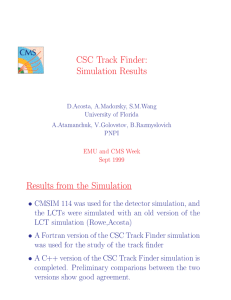
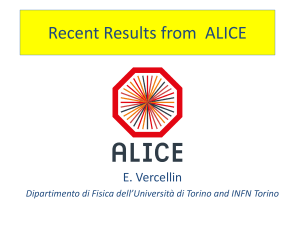
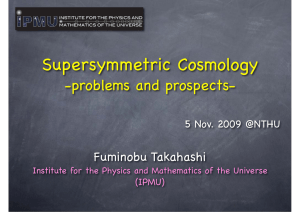
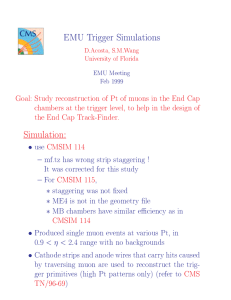
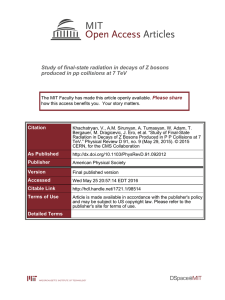
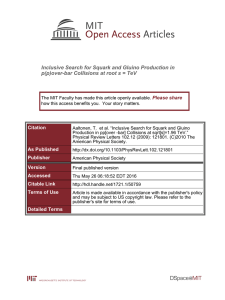
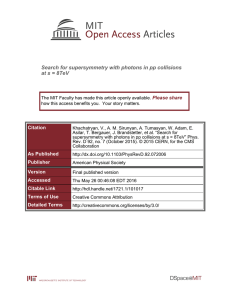
![Dalitz plot analysis of D[subscript s][superscript +]-- >pi[superscript +]pi[superscript -]pi[superscript +]](http://s2.studylib.net/store/data/011557322_1-5ef07fc60213302c9318fd10975b4c1e-300x300.png)
